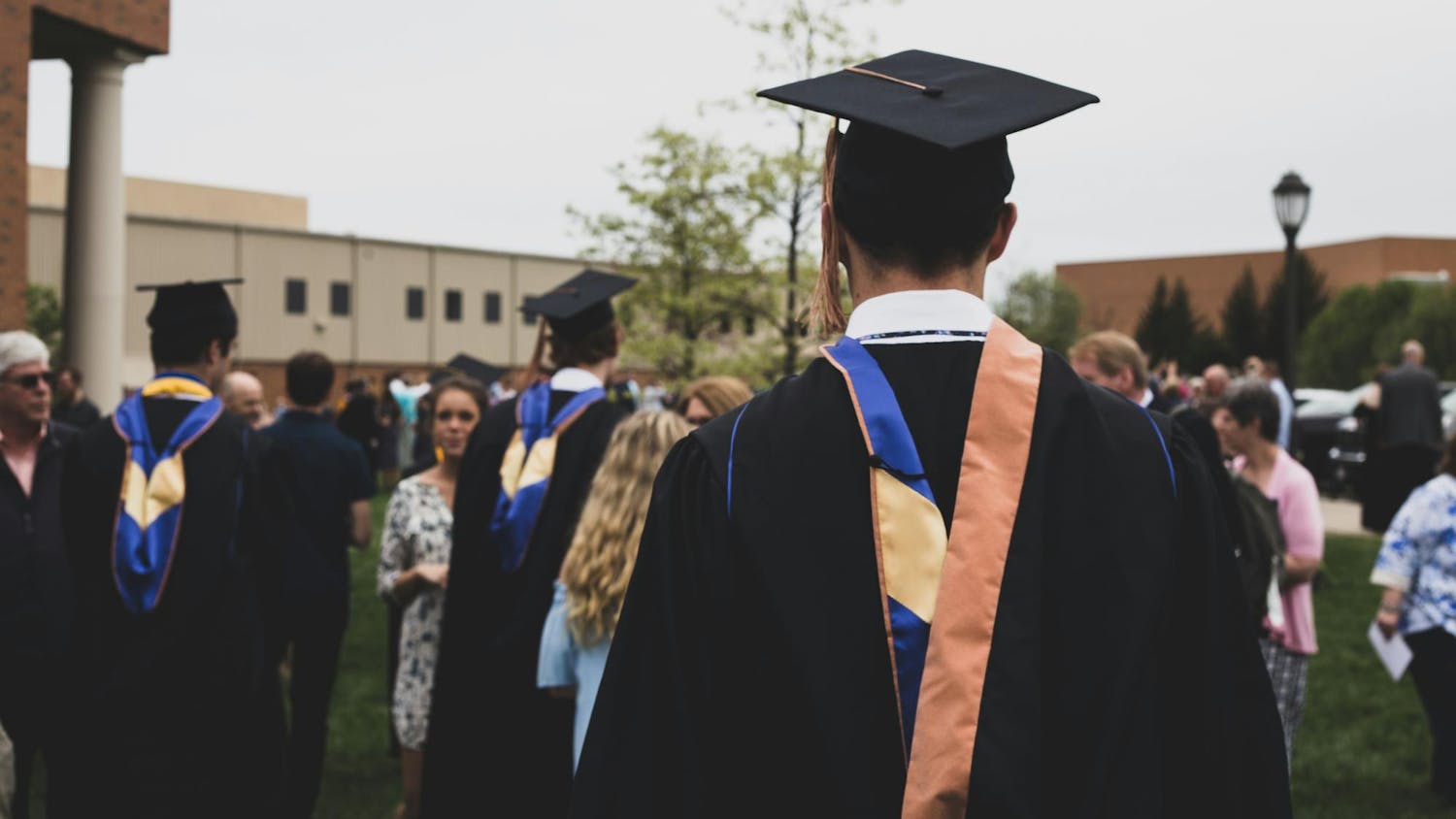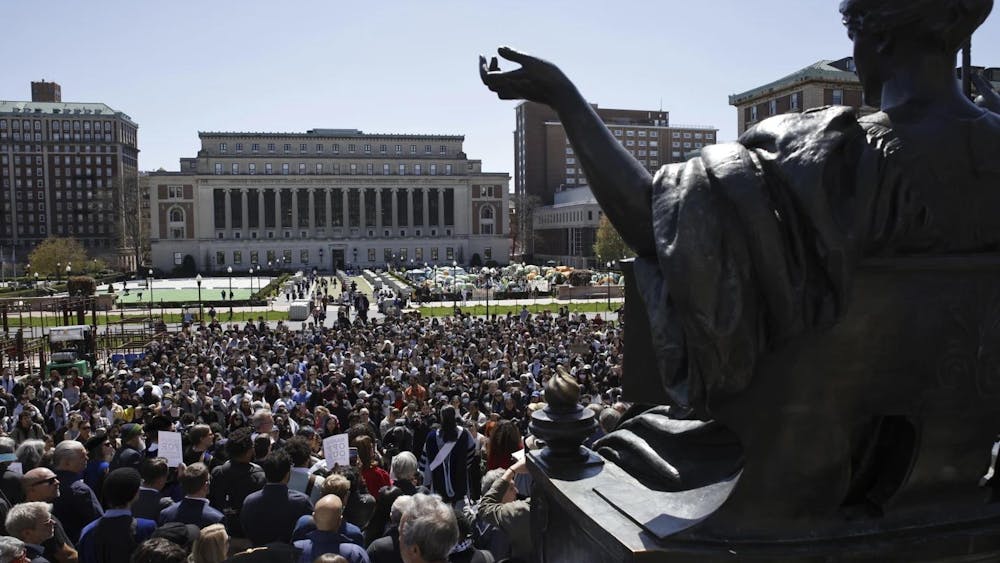Editor's Note: This story is the first installment in a two-part series on University President Emeritus Fr. Theodore Hesburgh's legacy at Notre Dame. This series is also the final installment in the "From the Office of the President" series.
He befriended popes and presidents. His name is on the University library. Time Magazine featured him on its cover. He served on the Civil Rights Commission and stood hand-in-hand with Martin Luther King Jr. during the 1960s. Women can earn a Notre Dame degree because of him.

But at the beginning of it all, University President Emeritus Fr. Ted Hesburgh didn't want the job.
"[Being president was] the last thing in the world I wanted to do, and I was not aching to get these big jobs," Hesburgh said. "I just wanted to teach and be in the hall and work for the students. That's literally what I had in mind of what I was going to spend my life doing. And I come back here, and within six or seven years, I wind up being president.
"That to me was not exactly a gift from heaven."
Hesburgh had begun his studies at Notre Dame in 1934 and completed his undergraduate degree in philosophy at the Gregorian University in Rome in 1939. When he returned to Notre Dame in 1945, he was a priest interested in teaching theology and working as a rector in Farley Hall.
By 1952, he was the 15th president of Notre Dame. He was 35 years old.
In a recent interview with The Observer, Hesburgh, now 95, reflected on the change of plans that took him from a young theology professor to the office on the top of a library that bears his name and towers over the campus he helped build.

"We were not a very great university at that time," Hesburgh said. "We had a miserable little budget of about $7 million. Today, it's $7 billion."
When Hesburgh first assumed the mantle of University president, the job was much different. The Congregation of Holy Cross governed Notre= Dame and ran many of its daily operations. The University president also acted as the superior of all the order's priests on campus, and he was limited to two three-year terms in office.
After Hesburgh completed his two terms in office, he said the congregation removed him from the position of superior that could by canon law only be held for six years. But he remained in the Office of the President.
"At the end of six years, they said, 'Keep on going,'" Hesburgh said. "And I went on for almost 40 years."
In 1967, the congregation relinquished official control of the University and turned its leadership over to a Board of Trustees, a mixed group of lay and religious members.
With the change, Hesburgh said Notre Dame truly became a "self-propelled" establishment.
"[The Congregation of Holy Cross] owned the University, insofar as anybody owns the University, but they turned it over to become an autonomous corporation," Hesburgh said. "They took it lock, stock and barrel and turned it over to this new corporation called the University of Notre Dame du lac."
The Board of Trustees was not the only addition to Notre Dame during Hesburgh's term.
"We needed all kinds of buildings," Hesburgh said. "We needed arts buildings, we needed science buildings, we needed laboratories, we needed playing fields, we needed everything.
While Hesburgh added 40 new buildings to campus during his time at Notre Dame, his first order of business was hiring new deans to lead the University's academic life to a new level.
"You need absolutely first-rate deans who can reach out and attract faculty to transfer to Notre Dame, and once they get here, they can work with [those faculty] to increase ... in their fields," he said. "And that's what happened. I mean today, I'd say the people that were teaching when I first became president could never get a job here."
Grants from the Ford Foundation and other organizations began the growth in fundraising and financial development that would skyrocket during Hesburgh's tenure. During his 35 years, Hesburgh grew Notre Dame's endowment from $9 million to $350 million, according to the University website.
"The Ford Foundation got into a developmental program developing some promising colleges to grow into great universities," he said. "We were one of the original five or six picked out."
Hesburgh credited the work of his fellow administrators, especially former executive vice president Fr. Ned Joyce.
"The best friend I had was Edmund P. Joyce, Fr. Ned Joyce," Hesburgh said. "He was a superb companion because first he was very smart, and on top of that he had knowledge that I didn't have. He was a [certified public accountant], and he was also a big sporting fan so he knew about athletics."
Joyce retired from his position in 1987, the same year as Hesburgh. When the two retired, Hesburgh was the longest-tenured university president in the United States, according to the University website.
His long time in office, so different than the life he planned for himself as a young theology professor, has been a blessing in disguise, Hesburgh said.
"With continuity, everything moves," Hesburgh said. "With discontinuity, everything changing every three or four years, you're not going anywhere. One guy just gets started, and he's changed with somebody else, and he just gets started, and you don't have that continuous thrust upwards. But we had people around so long that we were part of a continual upward effort.
"By and large, we are a fully-built, equipped, manned - and womaned - university. And it's been a terrific growth."
Tomorrow: University President Emeritus Fr. Ted Hesburgh on keeping the door open to students.












